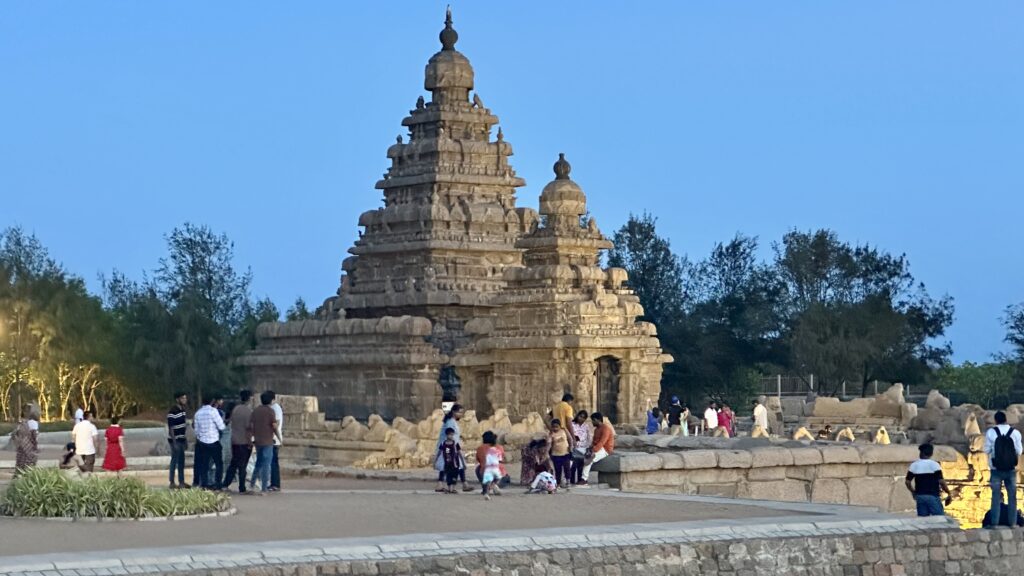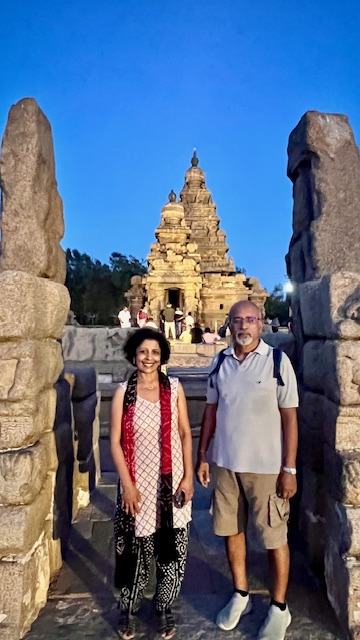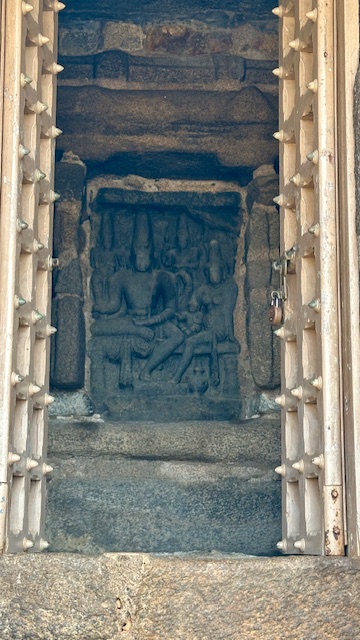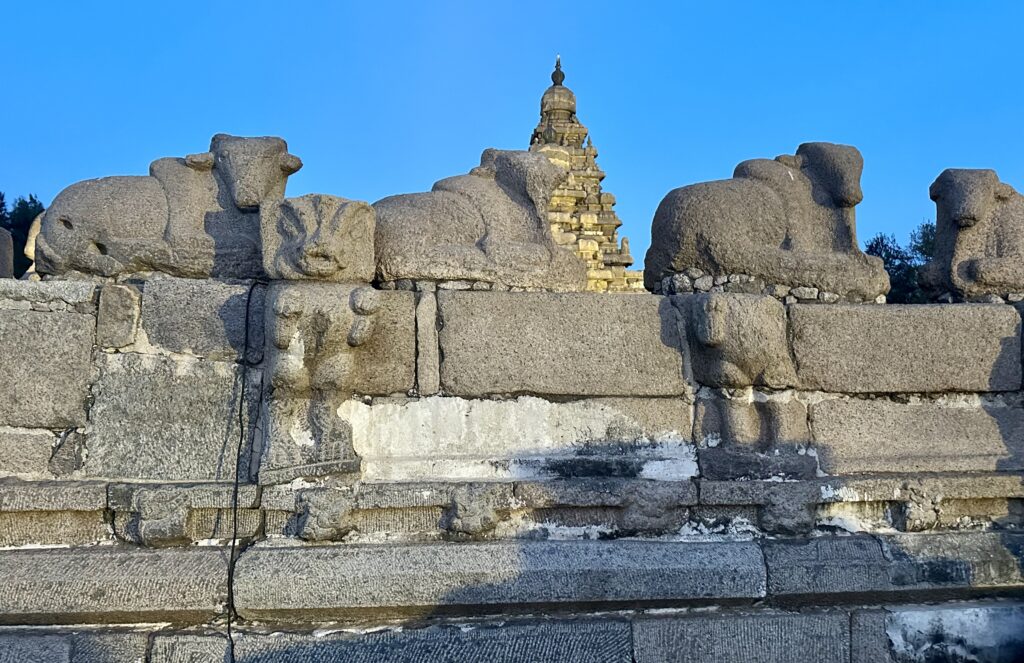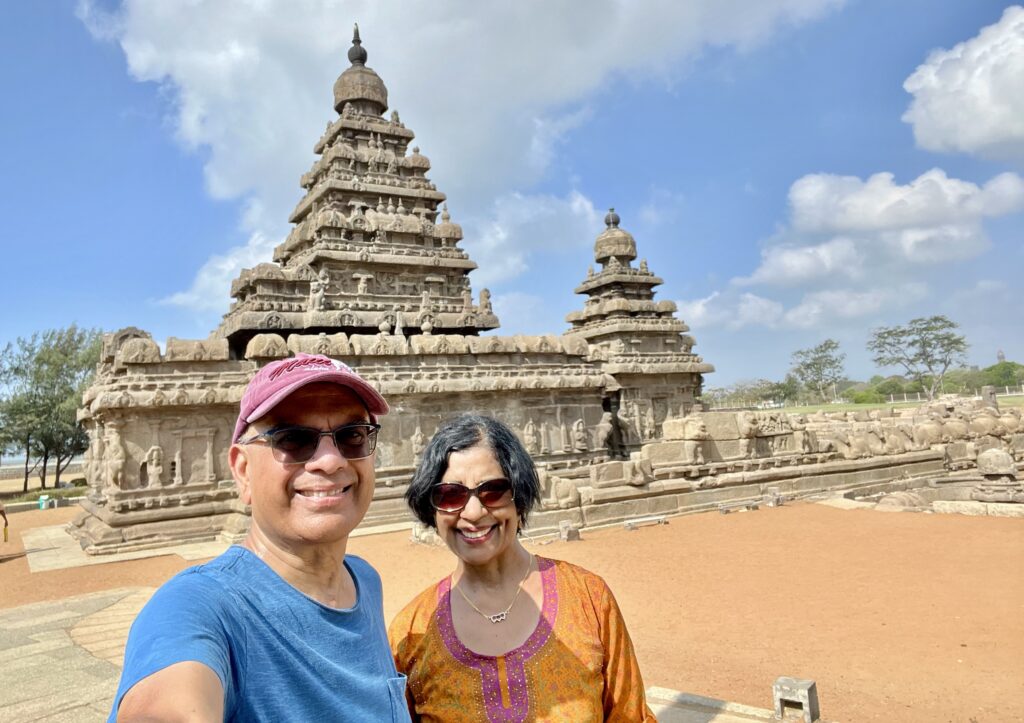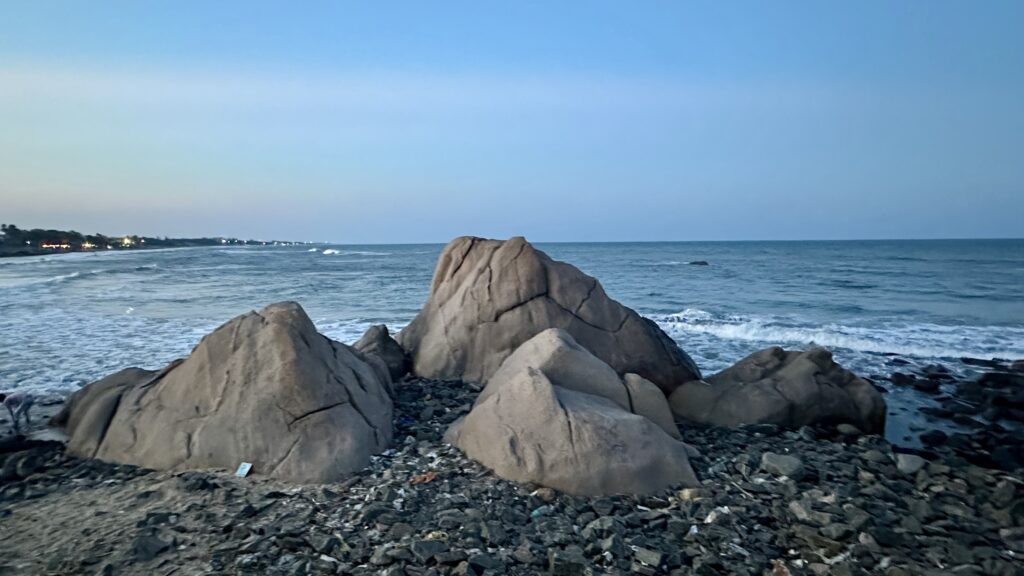Mahabalipuram (also known as Mamallapuram), is a town best known for its ancient rock-cut temples and monolithic sculptures, which are some of the finest examples of Dravidian art and architecture in India. This coastal town is a UNESCO World Heritage Site, attracting visitors from all over the world who come to explore its rich artistic and cultural heritage.
Mahabalipuram rose in stature and importance during the period between 4th and 9th century when the Pallava dynasty ruled the land and built the famous monuments which include the Shore Temple, Pancha Rathas (Five Chariots), and Arjuna’s Penance.
We visited this place a couple of times. It is 58 km south of Chennai and is less than a 2-hour drive by car. All the sites that are described on this page can be easily covered in a day. We explores the sites over a period of 2 days. There are many luxury hotels in Mahabalipuram overlooking the bay of Bengal with stretches of private beach area. We stayed in one of them – Chariot Beach Resort the first time we visited in 2012. The 2nd time we visited in 2025, we stayed in a 2-bedroom/2 bathroom Airbnb (Mahizh Home) which was within walking distance to all the sites.
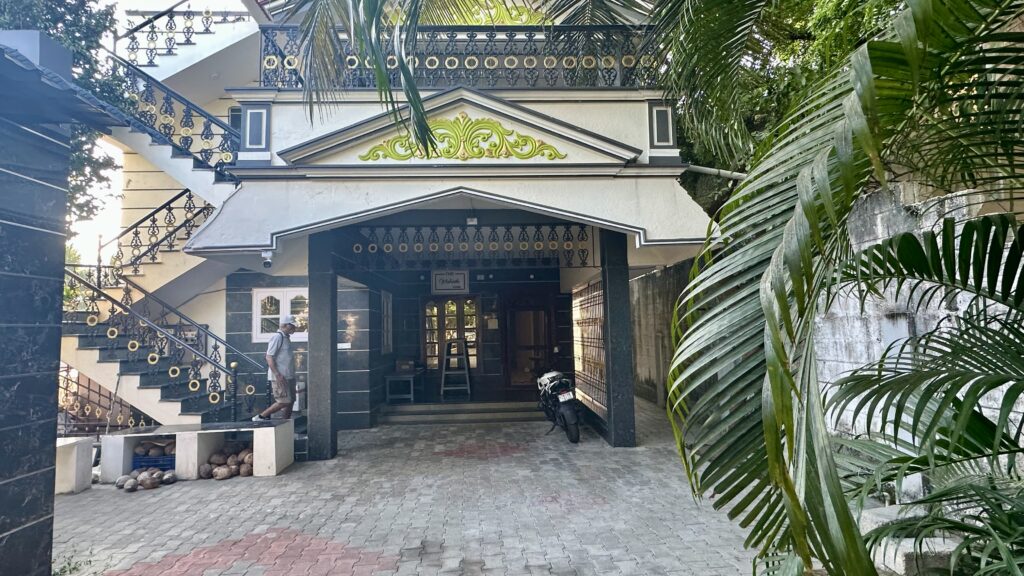
There are 3 main complexes to visit at Mahabalipuram and you can buy combo ticket to all 3 which was ₹40 for Indian nationals and ₹400 for foreigners:
- Pancha Ratha Complex
- Lighthouse and Krishna butterball complex
- Shore Temple
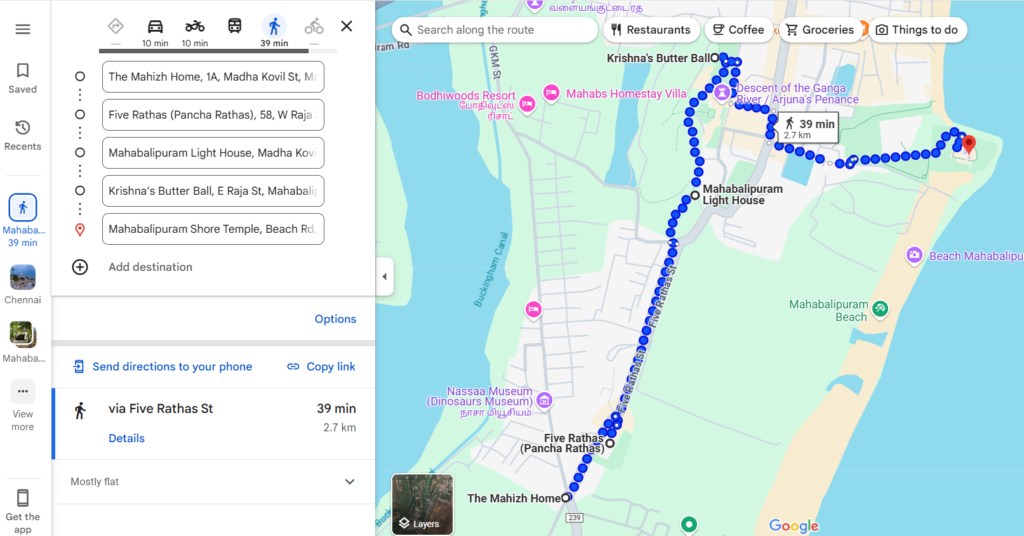
Pancha Ratha Complex – This complex was a mere 5 min walk from our Airbnb. The Pancha Rathas (Five Chariots) is named after the Pandavas and Draupadi from the Mahabharata and are prime examples of early Dravidian architecture. Each of the five rathas is carved from a single piece of granite, making them remarkable examples of rock-cut architecture. The rathas are named after the five Pandava brothers (Yudhishthira, Arjuna, Bhima, Nakula, and Sahadeva) and their wife Draupadi. These architectural wonders carved from single pieces of rock, showcases the Pallava dynasty’s artistic mastery.
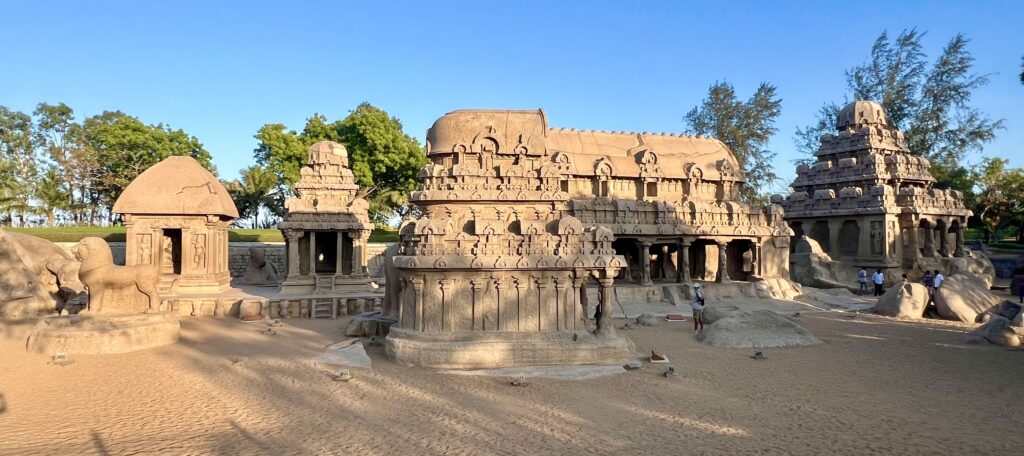
Pancha Ratha Complex, Draupadi Ratha – Located at the entrance of the complex, Draupadi’s Ratha is dedicated to Goddess Durga. This temple is shaped like a simple hut and is guarded by two female door-keepers, one holding a bow and the other a sword. Inside, a bas-relief depicts Goddess Durga standing on a lotus with worshippers at her feet. The front of the temple features a majestic lion, symbolizing the celestial vehicle of the goddess.
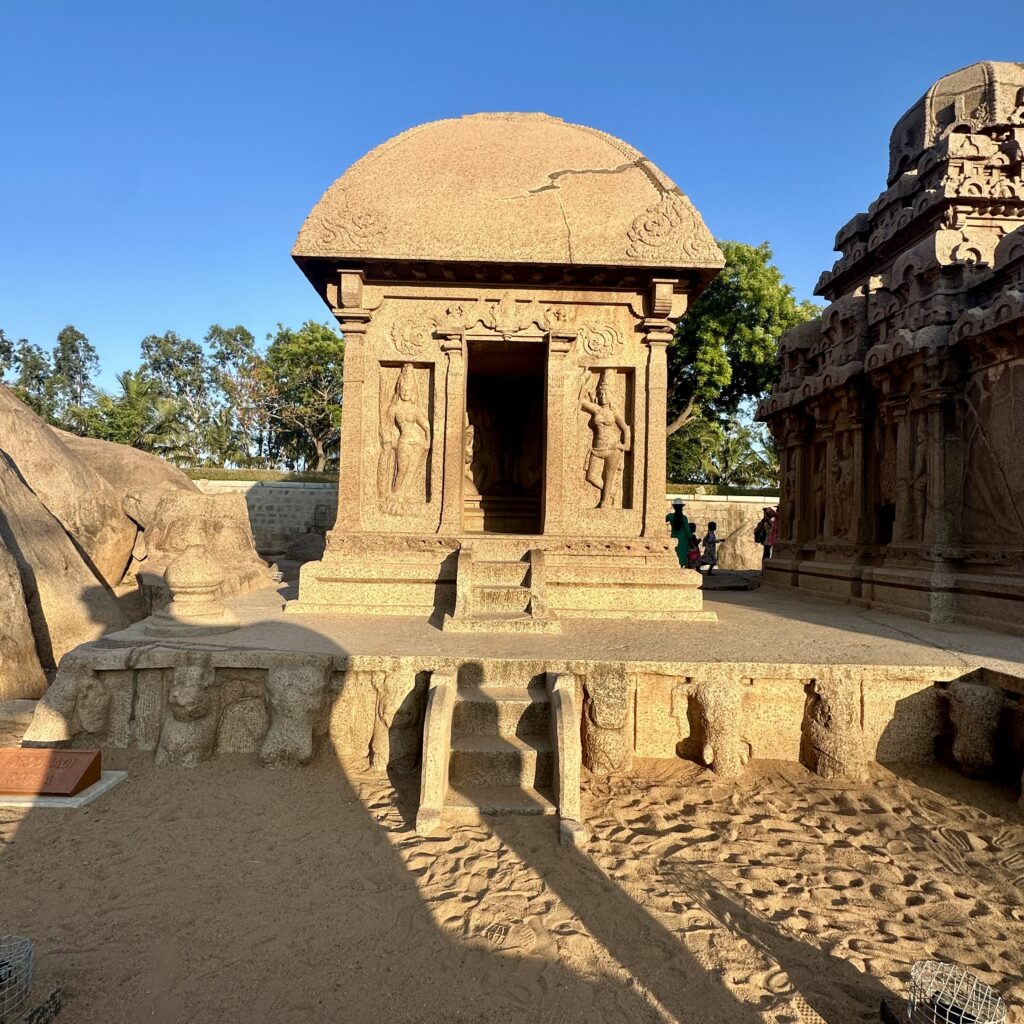
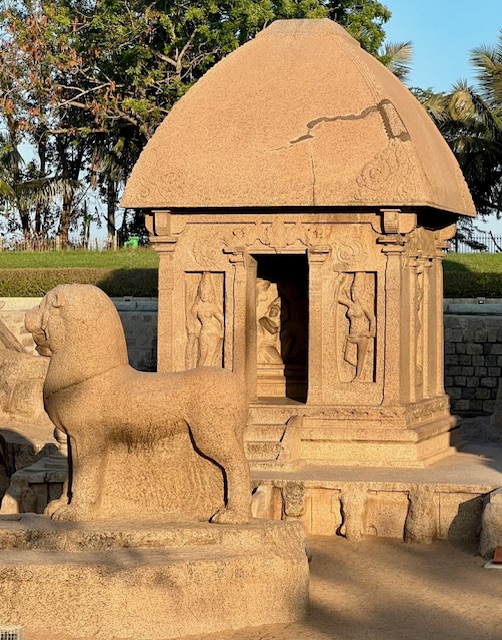
Pancha Ratha Complex, Arjuna’s Ratha – is dedicated to Lord Shiva. This temple has a small portico supported by intricately carved pillars. While the inner sanctum is plain, the outer walls are adorned with carvings of gods and humans. Notable carvings include a depiction of Lord Vishnu with a Garuda, and another of Indra riding an elephant. The unfinished Nandi bull nearby hints at the temple’s connection to Lord Shiva.
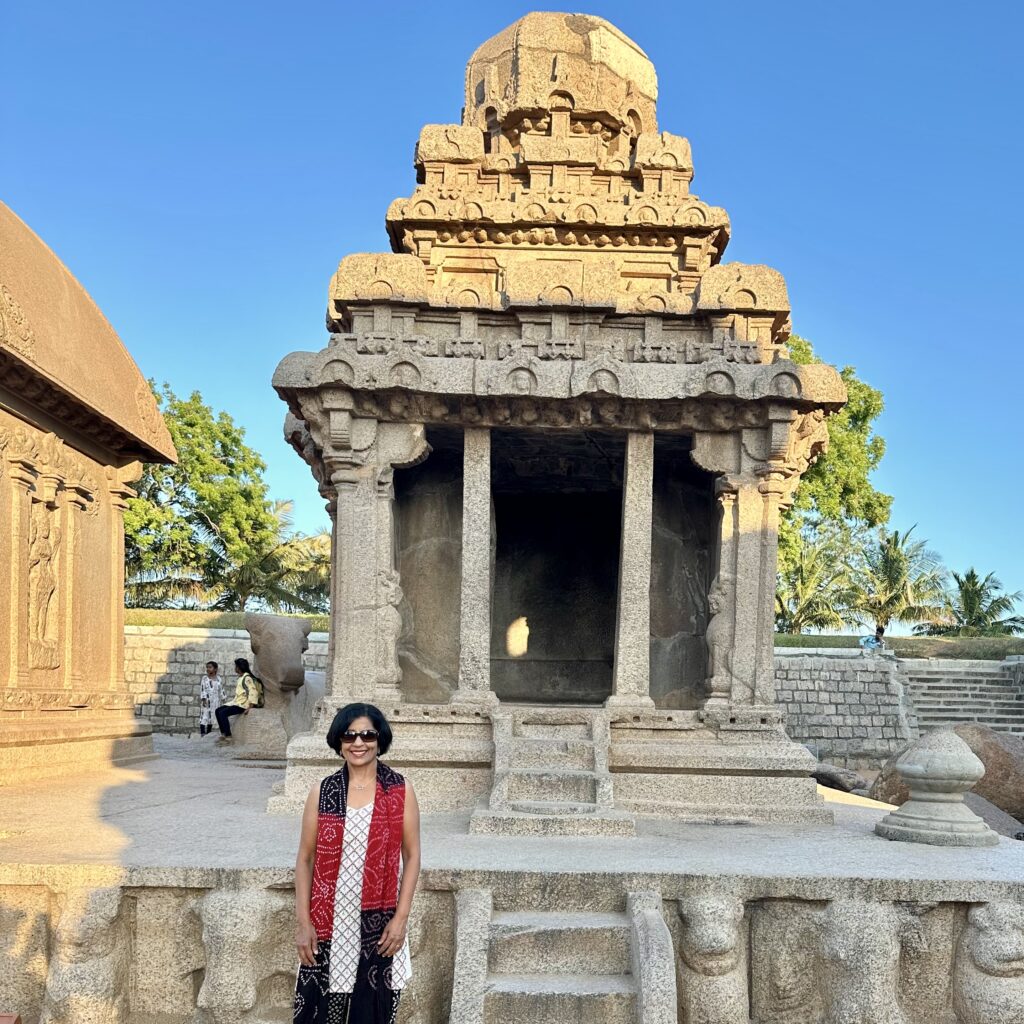
Pancha Ratha Complex, Nakula-Sahadeva Ratha – Facing Arjuna’s Ratha is Nakula-Sahadeva’s Ratha, a double-tiered structure dedicated to Lord Indra, the God of Rain. The temple is associated with elephants, with a large, beautifully sculpted elephant standing nearby. This Ratha, named after the twins Nakula and Sahadeva, is an excellent example of the architectural style known as Gajaprishthakara, meaning “elephant’s back.”
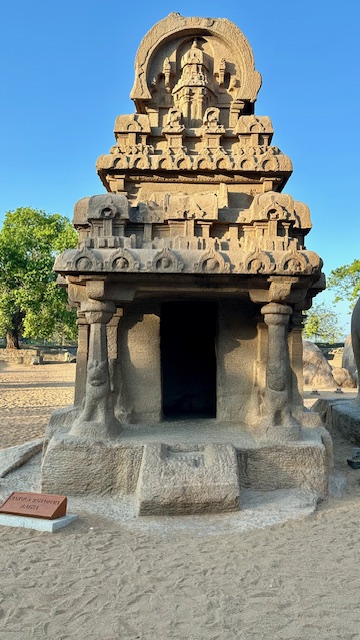
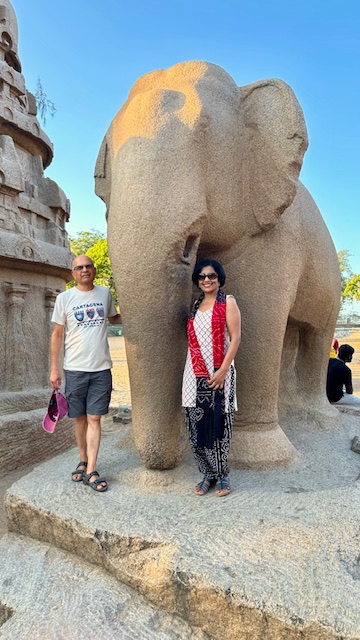
Pancha Ratha Complex, Bheema Ratha – Bhima’s Ratha, the fourth in the series, is a massive structure measuring 42 feet in length, 24 feet in width, and 25 feet in height. The temple is dedicated to Bhima, the strongest of the Pandavas, known for his immense strength and appetite. The temple’s pillars are carved with lion figures, although the rest of the structure remains unfinished, adding to its enigmatic charm.
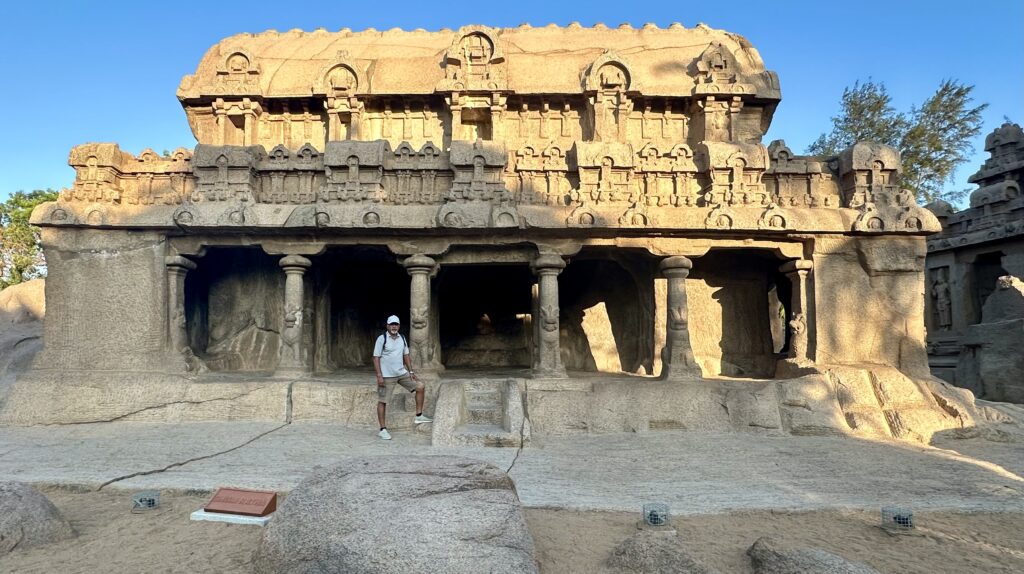
Pancha Ratha Complex, Dhramaraja Ratha – Among the 5 rathas, Dharmaraja Ratha is the most impressive and sculpturally rich and is named after the eldest Pandava. This three-tiered temple is dedicated to Lord Shiva and is adorned with intricate carvings that display a blend of divine and royal imagery. This temple stands as a precursor to the South Indian temple architecture that would develop in later centuries.
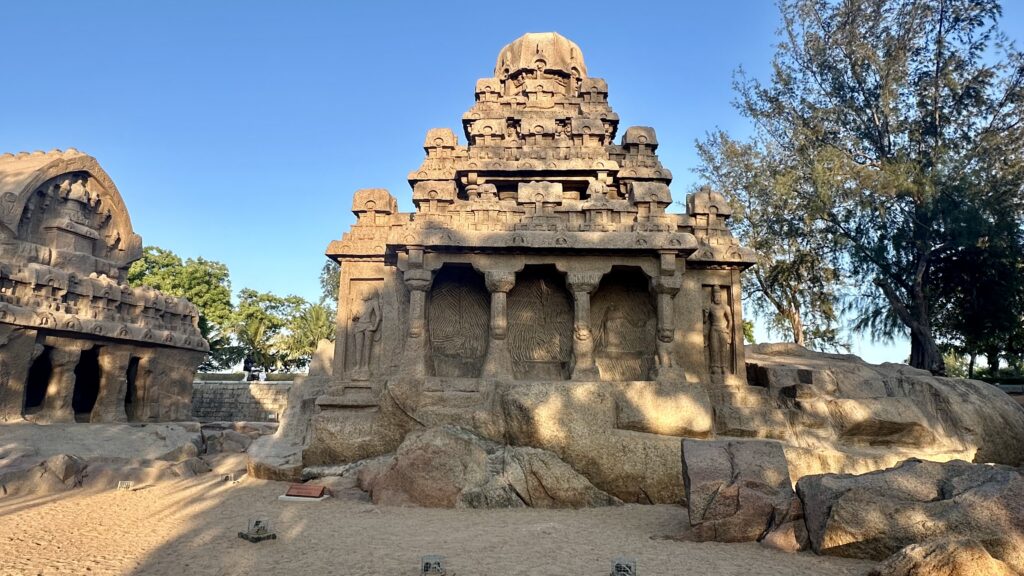
Lighthouse and Krishna butterball complex – There are 2 entrances to this complex. There is an entrance on the lighthouse side and the other entrance facing the Krishna’s butterball. On day 1, we entered the complex from the Krishna’s Butterball side which also has the stunning Arjuna’s Penance sculpture nearby.
Krishna’s Butterball – This is large piece of almost spherical rock balancing on an inclined plain. It is said that Pallava king Narasimhavarman used elephants to move this rock but failed. The boulder is approximately 6m high, 5m wide and weighs over 250 tons. The name Krishna’s Butterball is due to the story of Krishna stealing butter and the piece of boulder resembles a giant butterball which is used in making butter from milk.
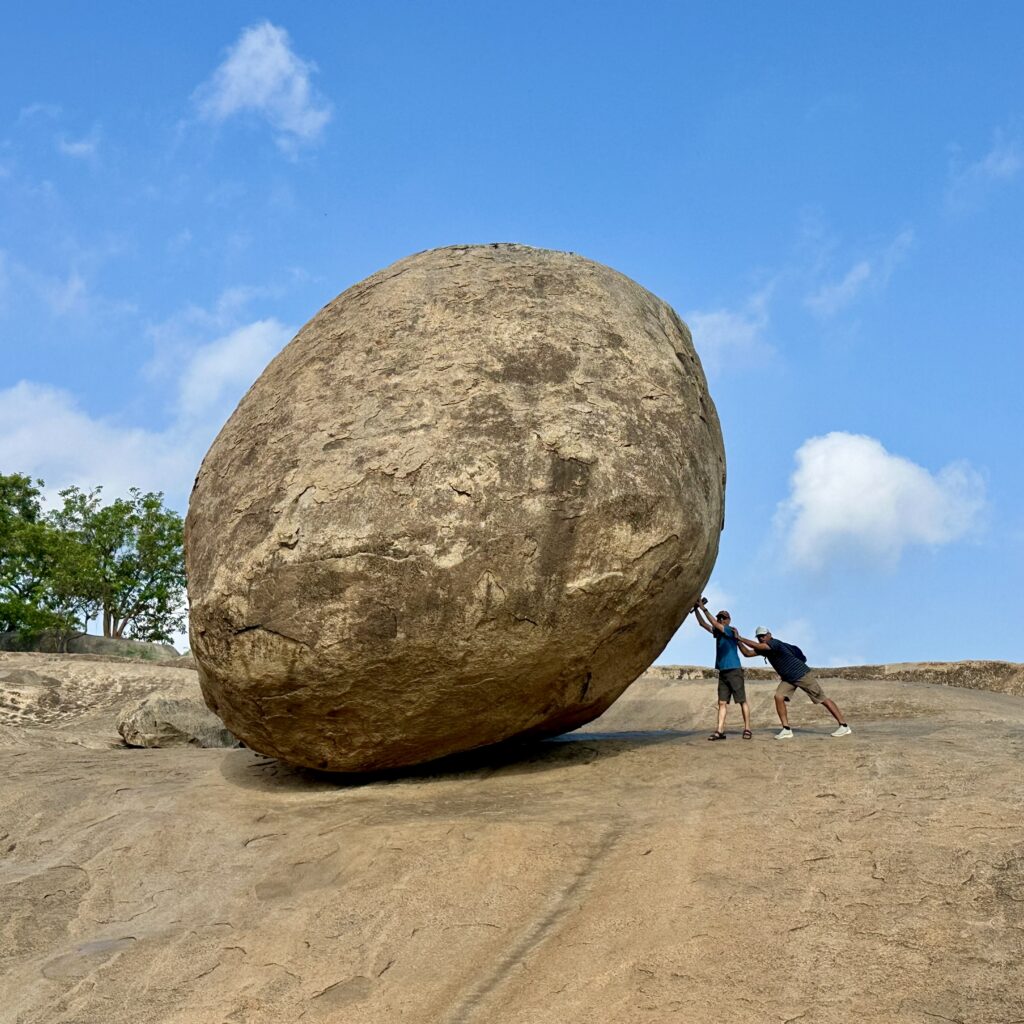
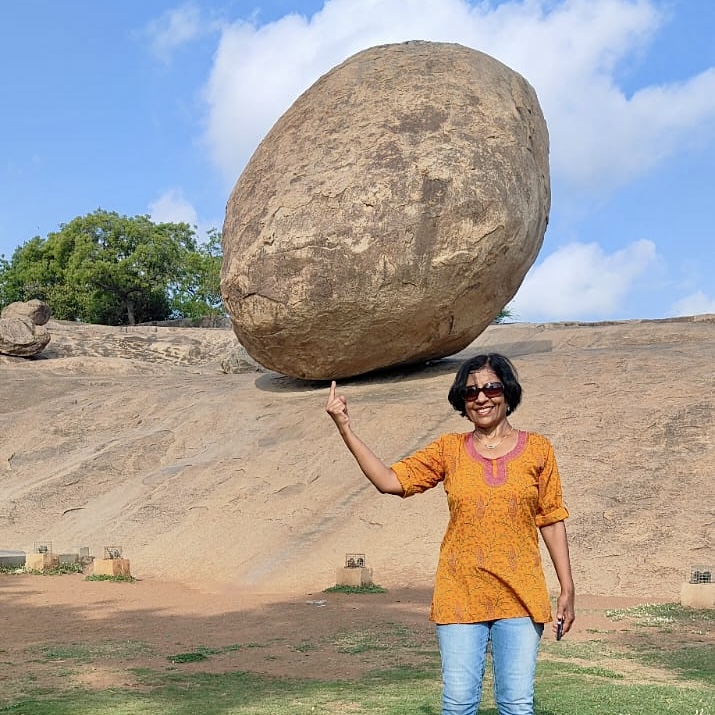
Triple celled rock shrine (Trimurti Cave) – This Triple-celled temple with superstructure is believed to be dedicated to Brahma, Vishnu, and Siva, the three gods of the Hindu pantheon. The entrance of each cell is flanked by dwarapalas(door guardians or gatekeepers) in narrow panels. In front of this temple is a circular rock-cut pool names as Gopi’s churn.

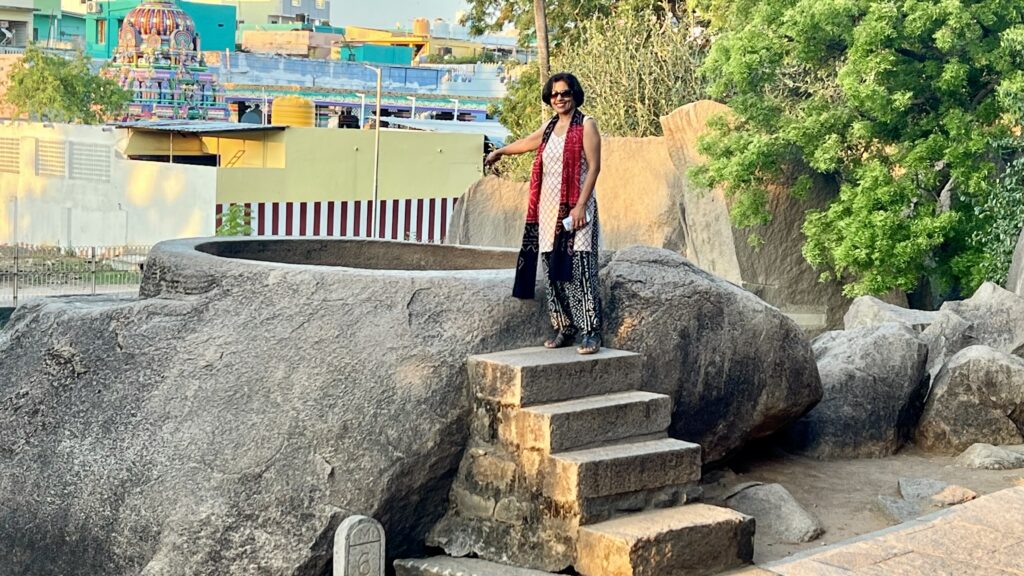
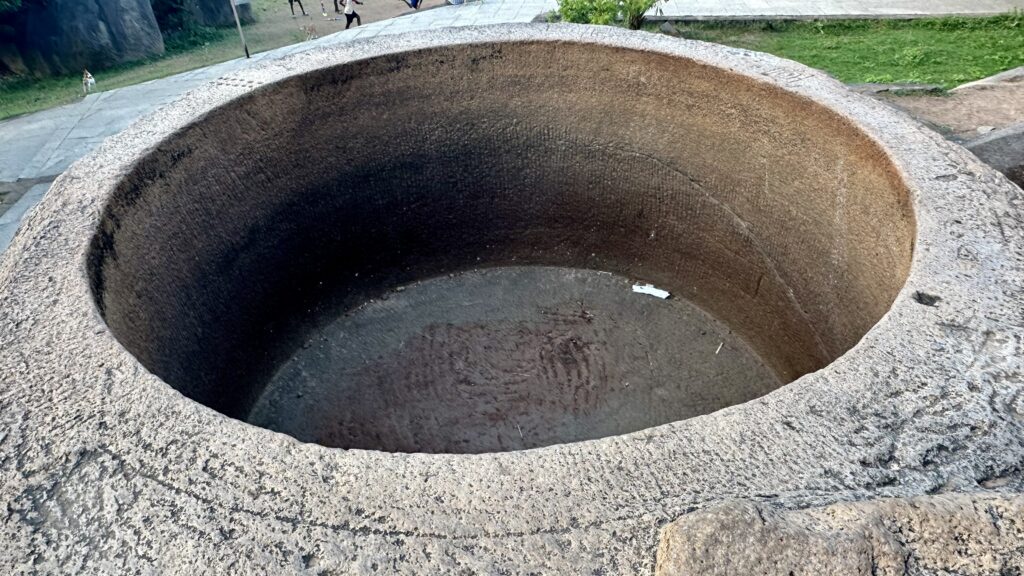
Ganesha Ratha – This is a monolithic rock cut temple was originally dedicated to Shiva with a presence of Linga but now it is replaced by a Ganesha idol and hence called Ganesha Ratha.
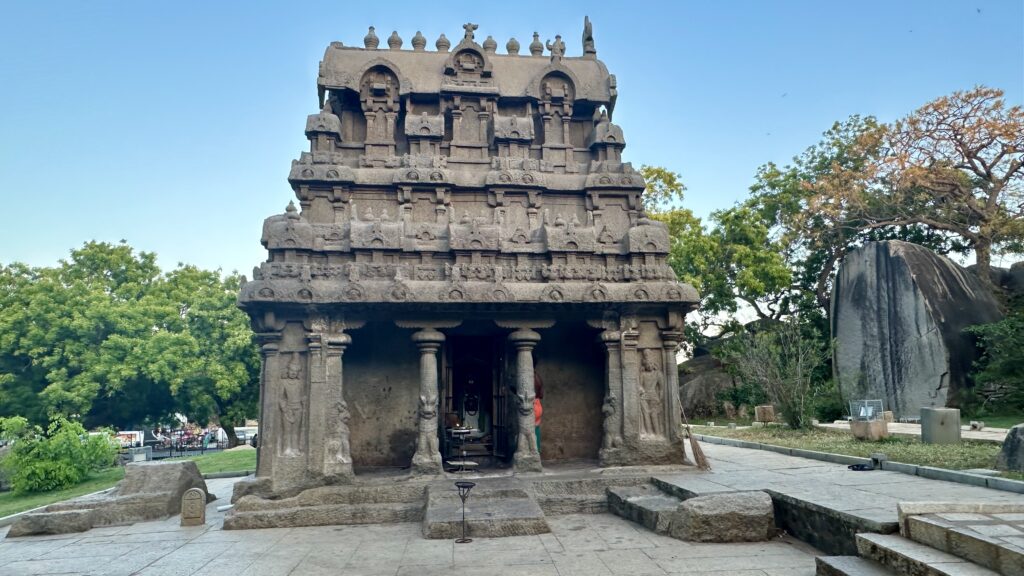
Arjuna’s Penance – There are 2 interpretations to this sculpture:
- The sculpture depicts Arjuna, one of the Pandava princes, performing penance on the riverbank to gain the Pashupatastra, a weapon from Shiva, to aid him in the Kurukshetra War.
- some scholars also interpret the relief as the “Descent of the Ganges,” where King Bhagiratha performs penance to bring the Ganges river from the heavens to earth. Both stories involve a divine being (Shiva or Vishnu) and a human hero seeking a boon.
The sculpture was created on two large boulders of pink granite. The boulders measure 15 by 30 m. Many of the figures carved are life size. The natural cleft, a very large perpendicular fissure, is skillfully sculptured. It is in between the two boulders and is integral to the mythical narratives carved on the entire relief. A water tank was once located at the top of the rock to release water denoting the Ganges River. It cascaded over the cleft and the relief to give the impression of the Ganga descending from the head tied dreads of Shiva. The relief is an ensemble of over a hundred figures of gods, people, half-humans and animals
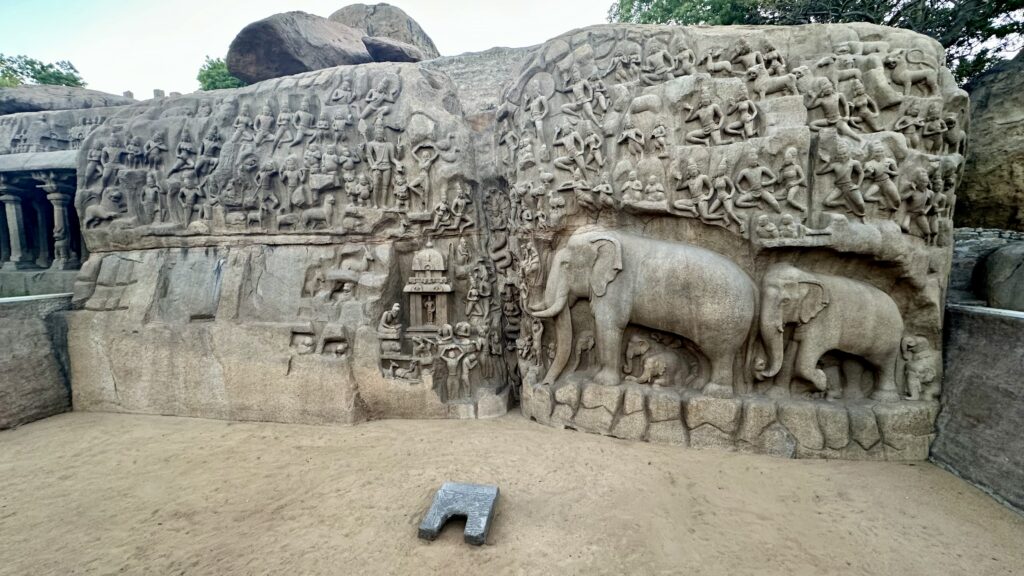
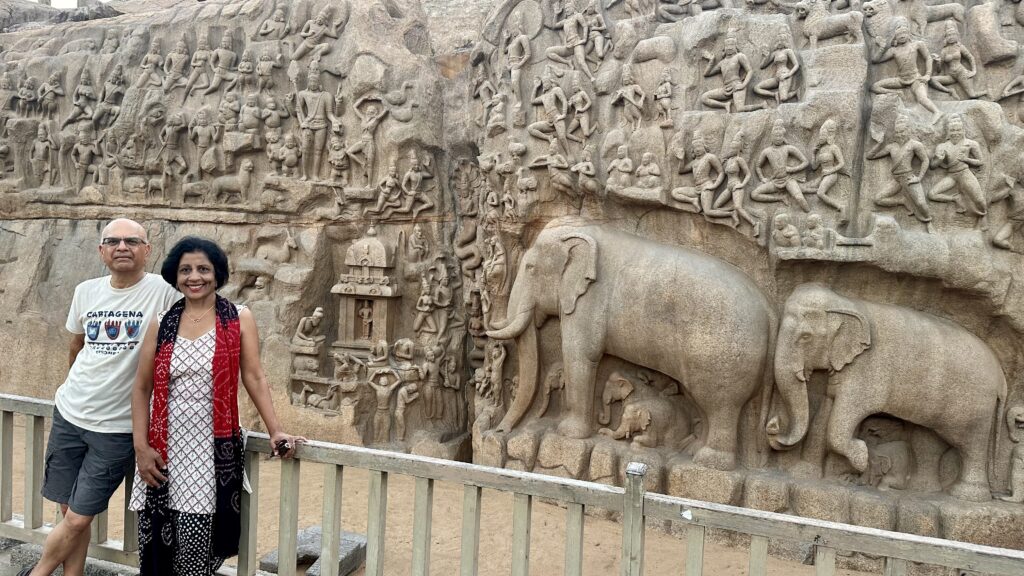
Panchapandava Mandapam (On the left side of Arjuna’s Penance) – A large cave temple of which only six lion pillars and similar pilasters at either end are finished. The brackets above the capitals of these pillars are decorated with lions and griffins with human riders.
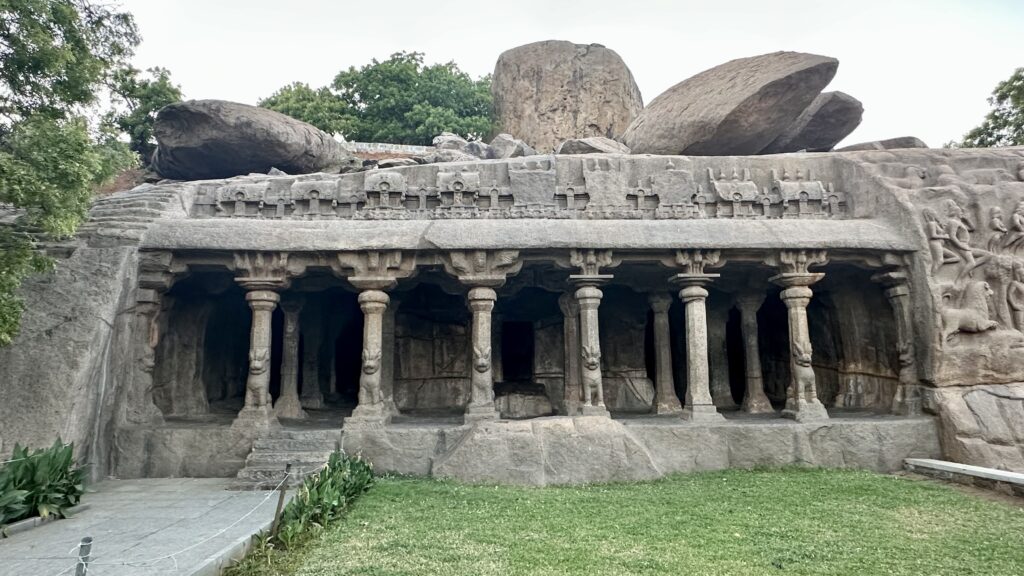
Krishna Mandapam or Govardhanadhari Panal (On the left of Panchapandava Mandapam) – The huge bas-relief with a hall (mandapa) of the 16th century added in front depicts the story of Krishna lifting the Govardhana hill to protect the cowherds and the cattle from the storm raised by Indra. The central figure of Krishna, with Balarama by his side, is shown lifting the hill with his little finger. Enjoying the divine protection, the rest are carrying on their business as usual.
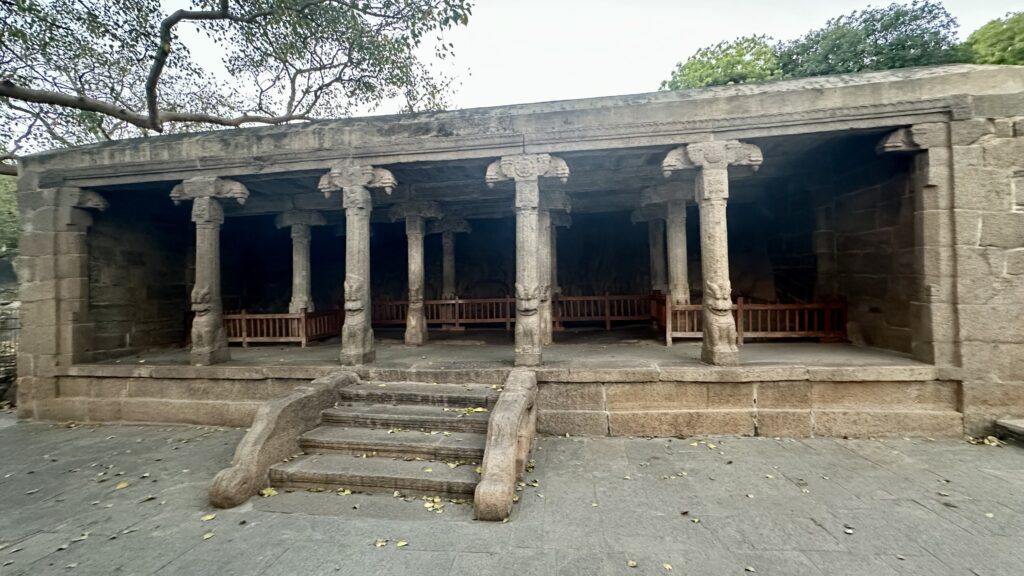
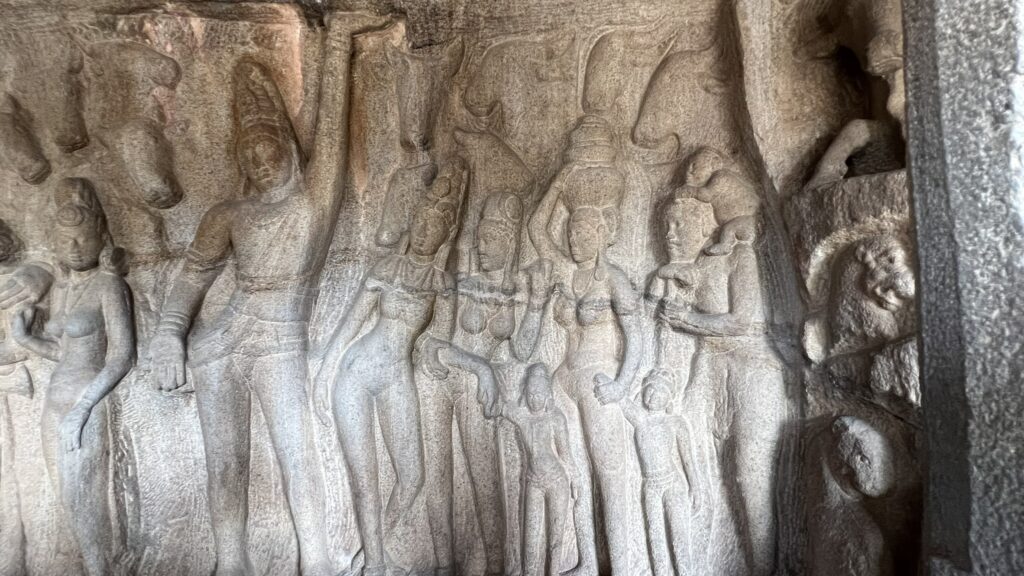
Lighthouse and Iswara Temple – When you enter from entrance on the lighthouse side, you will first encounter steps leading to Iswara Temple. It is a small temple built on top of a hillock and you can get a great view of the lighthouse from this temple. You can walk down steps onto a rock to get a better view of the Lighthouse situated opposite.
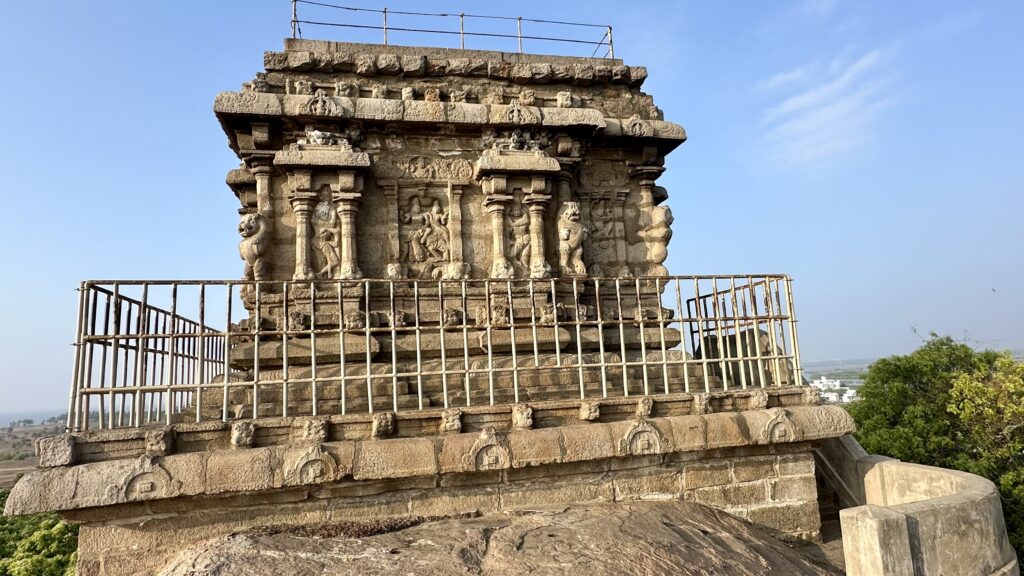
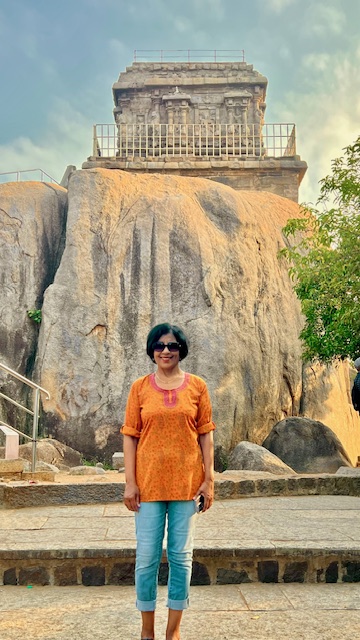
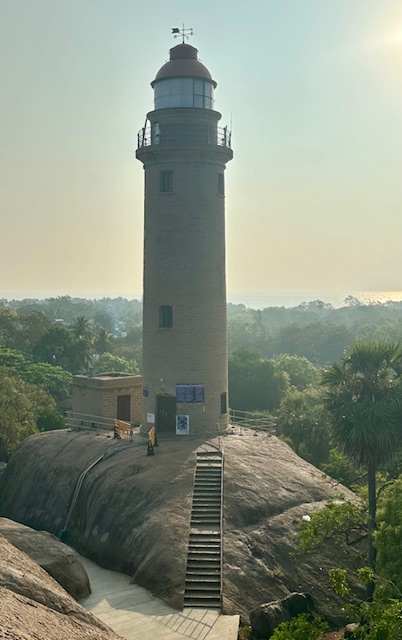
Lighthouse – This lighthouse was built around 1900 as per the inscription on the foundation stone. You can buy a ticket at the base and go all the way up to get a full panoramic view of the surroundings. At night the lighthouse lights up the sky with its circulating lights.
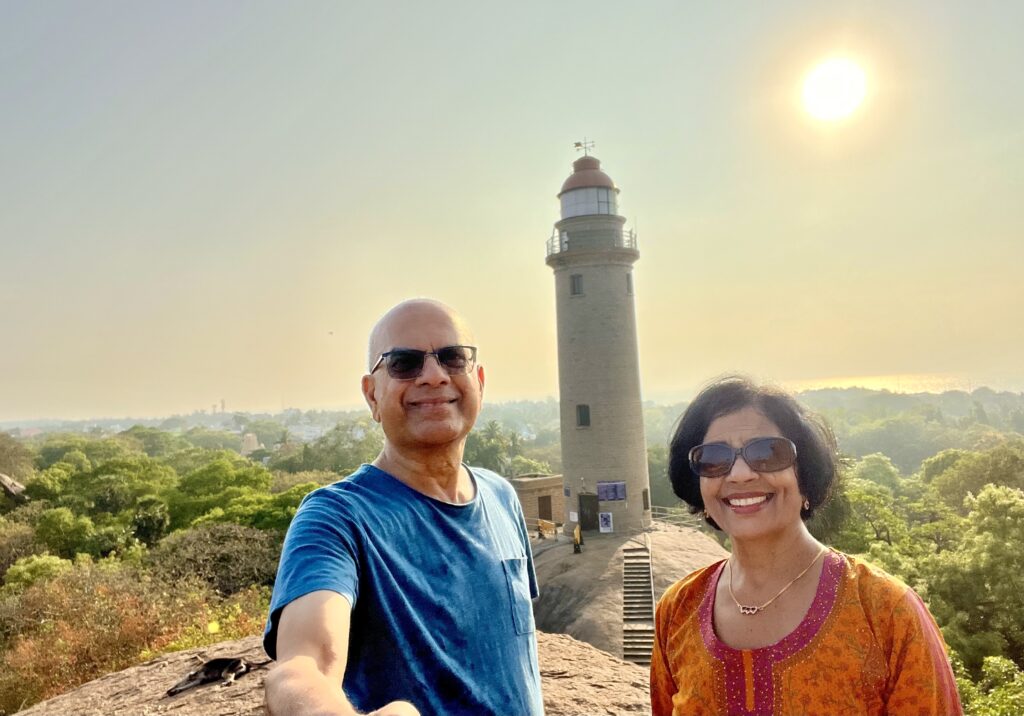
Mahishamardhini Mandapam – The cave has a front mandapa with a triple cell with four pillars and two pilasters. On either side of this mandapa two large panels one representing Seshasayi Vishnu and other Mahishamardhini. The central cell is intended for a Siva Linga; on the wall behind is the representation of Somaskanda.
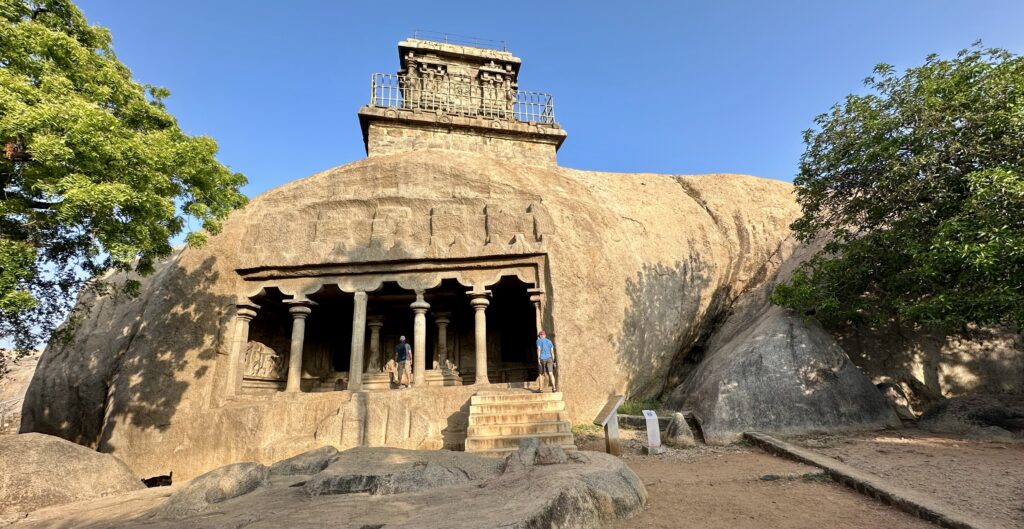
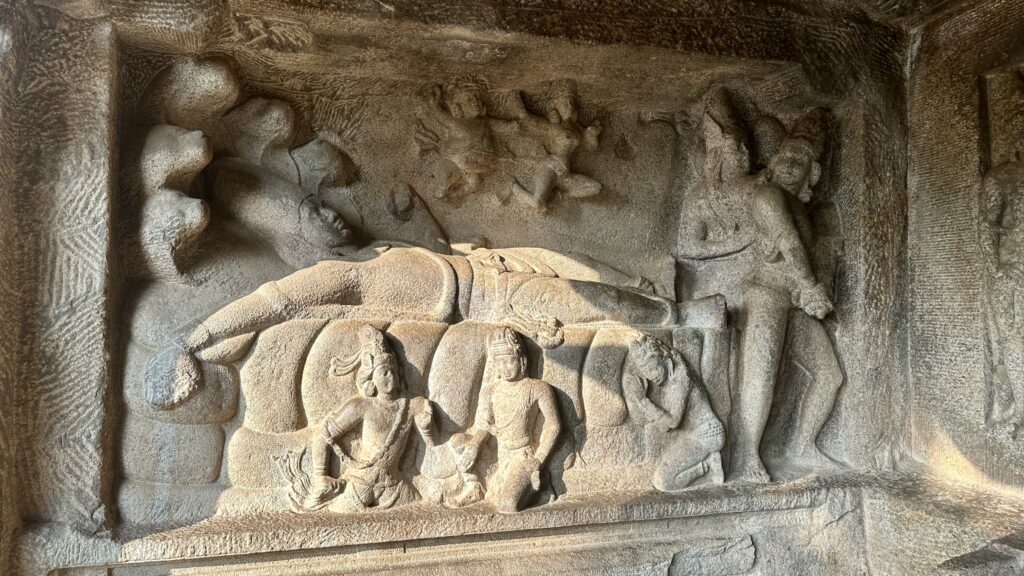
Ramanuja Mandapam – This is another fine example of a rock-cut cave temple in Mahabalipuram, It has six flat faced pillar followed by another two lion-faced pillars into the rock cut cave. No deities are present inside the cave.
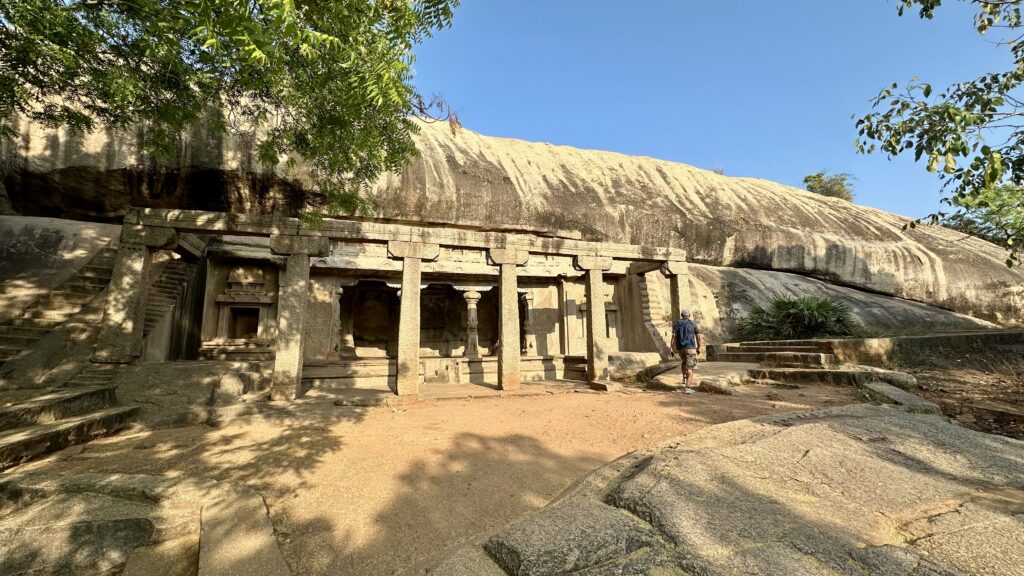
Draupadi’s Bath – The rock is cut to a rectangular cist like structure or like a bath tub and hence the name.
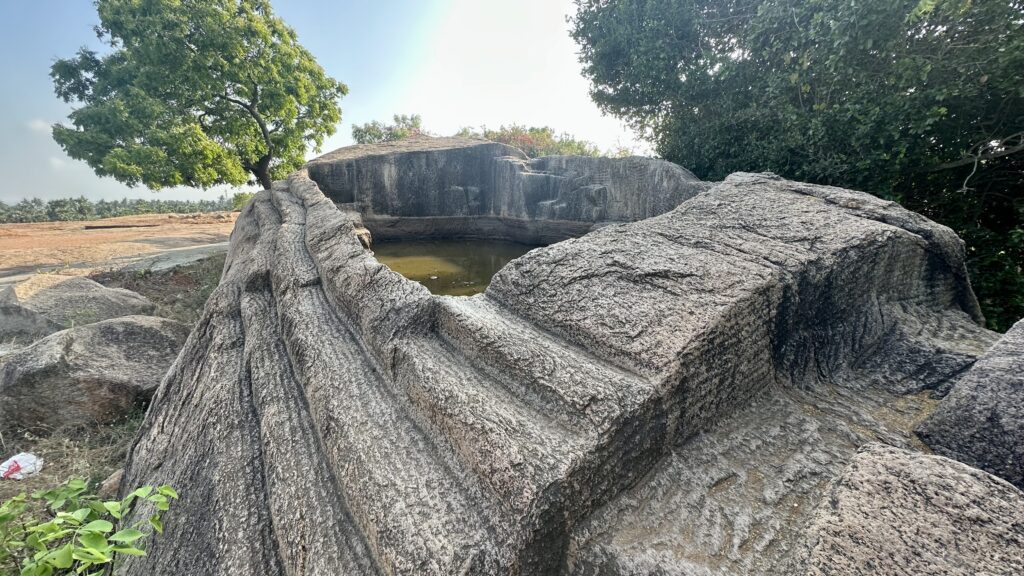
Royagopuram – This is an unfinished structure, even though it’s called a gopuram but there are no structures on the top, only the majestic pillar remains.
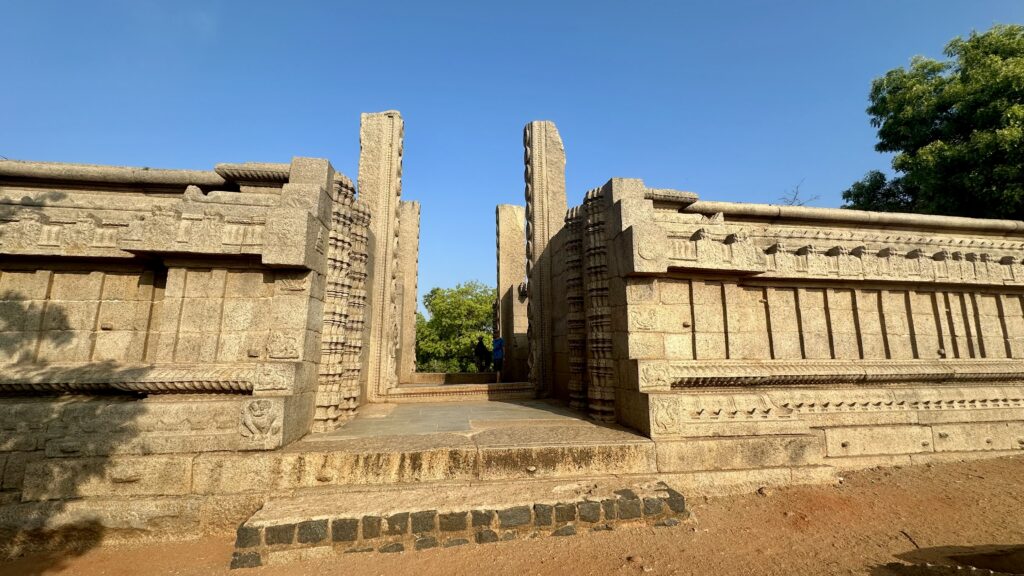
Varaha Cave – The mandapa in the front has two lion- pillars and two pilasters, and beyond this in the center, the cell is guarded by two dwarapalas. There are four panels on the walls of front mandapa representing Varaha raising goddess earth from the ocean. (Bhuvaraha panel), Gajalakshmi seated on a lotus and bathed by elephants, Durga with four arms and Trivikrama overcoming the demon king Bali.
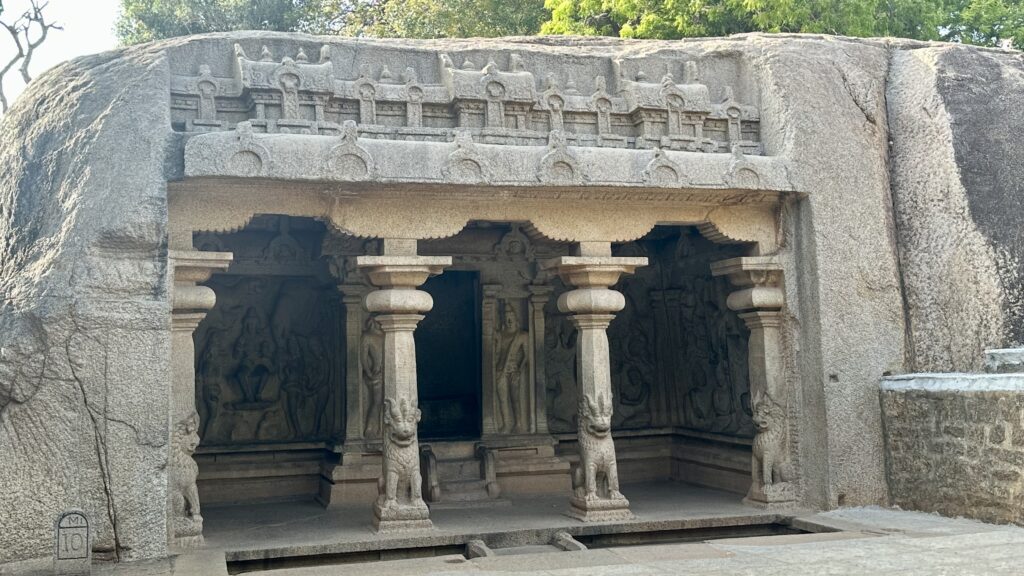
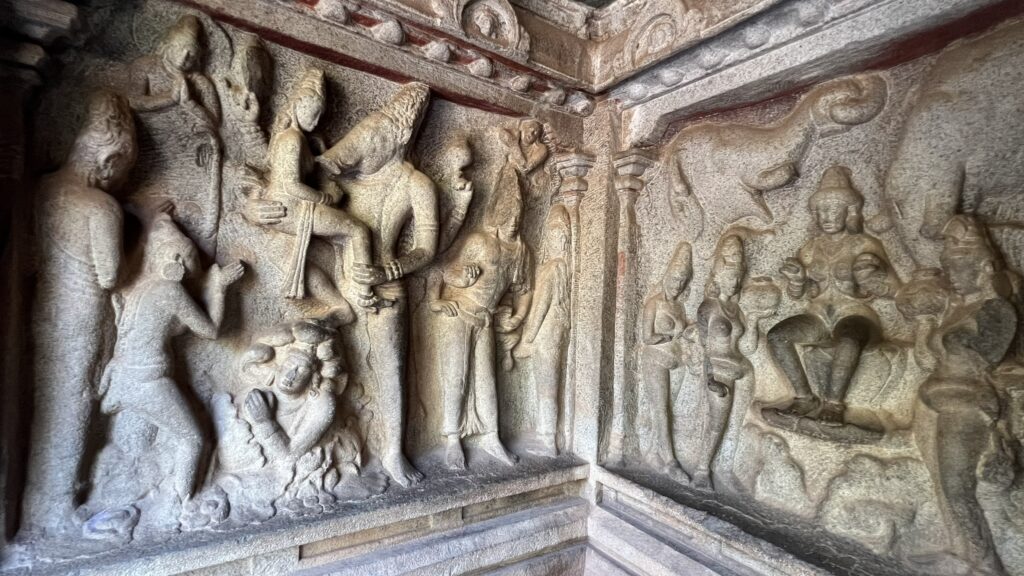
Shore Temple (or Mahabalipuram Temple) – Overlooking the Bay of Bengal, this whole structure was constructed using granite and built during 700-128 AD. The Shore Temple is also named as “Seven Pagodas” which indicates the existence of 7 temples from the past.
